
Sustainable Fashion in shoes - ecological alternatives to conscious consumers 2025
Discover the future of responsible footwear fashion! Meet ecological materials, sustainable brands, learn to recognize greenwashing and find out how to build a conscious wardrobe of shoes without harming the planet.

Climate crisis vs. Love for shoes - can both worlds be reconciled?
The footwear industry is one of the most polluting fashion sectors. Annually, over 24 billion pairs of shoes are produced, and most of them end garbage dumps after only a few months of use. Can we love shoes and take care of the planet at the same time?
Sustainable fashion in shoes is not only ecological marketing trends. This is a revolution in thinking about the production, materials and life cycle of shoes. From innovative materials from ocean waste to Take -Back programs and repairs - the footwear industry slowly but consistently changes its approach.
In this article you will discover how to recognize really ecological shoes, learn the most interesting sustainable brands and learn how to build a responsible shoe wardrobe. Because styles and ecological awareness can - and should - go hand in hand!
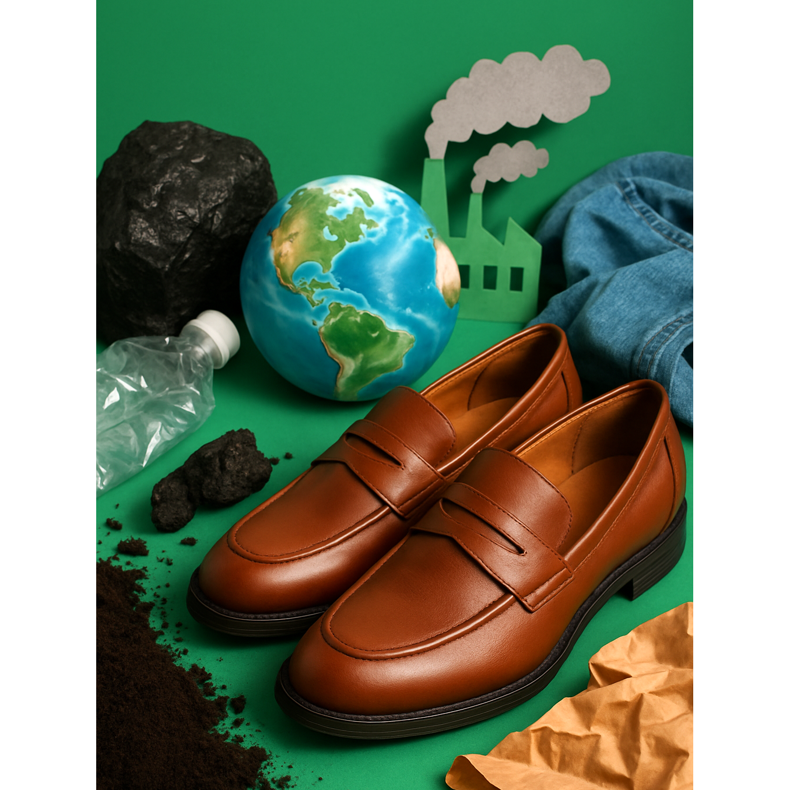
Problem - how the footwear industry destroys the planet
Carbon Footprint of the footwear industry
Shocking data on the environment:
Environmental Impact:
• CO2 emissions: 1.4% of global greenhouse gas emissions
• Water consumption: 8000 liters for one pair of leather shoes
• Chemicals: Over 3000 chemicals in production
• Waste: 300 million pairs of shoes a year in the USA
Fast fashion in shoes
The problem of cheap, disposable shoes:
Fast Fashion Shoes Characteristics:
• Short life cycle (3-6 months)
• cheap, synthetic materials
• production in countries with low environmental standards
• no repair or recycling
Supply chain banners
Hidden production costs:
Hidden Costs:
• Labor Conditions: Often unethical working conditions
• Chemical Pollution: Groundwater contamination
• Transportation: Long supply chains
• Packaging Waste: Excessive packaging
Consumer Behavior Patterns
How our choices affect the environment:
Problematic Patterns:
• Impulse Buying Triggered by promotions
• throwing shoes instead of repairing
• Buying more than we need
• Ignoring long -term costs
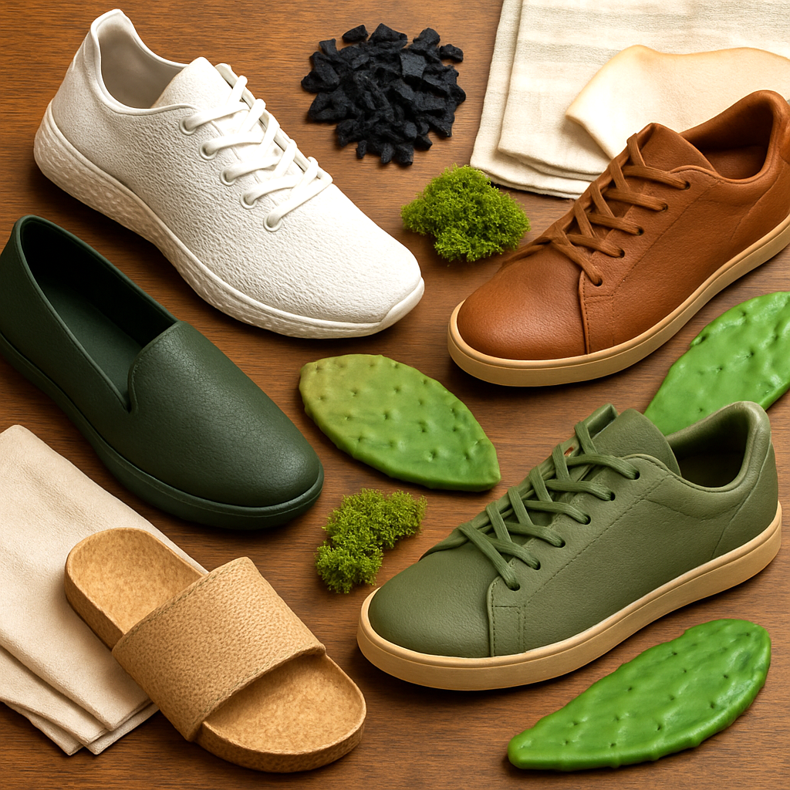
Material revolution - from which eco -friendly shoes are made
Recycling materials
Second life for waste:
Recycled Materials in Footwear:
• Ocean Plastic: Shoes from PET bottles fished out of the oceans
• Recycled Rubber: Car tires soles
• Post-Consumer Waste: Textiles from clothes from second-hand
• Cork alternatives: Cork soles after wine production
Bio-Based Innovations
Natural materials:
Natural Alternatives:
• Mushroom Leather (Mycelium): Skin from mycelium
• Pineapple leather (piñatex): From pineapple leaves
• Apple Leather: From waste from apple juice
• Cactus Leather: Nopal from cacti from Mexico
Lab-Grown Materials
Technology of the future:
Cutting-Edge Innovations:
• Biofabricated Leather: Bred in laboratories
• Algae-Based Foam: Algae soles
• Lab-Grown Silk: Without the use of silkworms
• 3D Printed Components: Zero Waste Production
Traditional Sustainable Materials
Proven, natural options:
Time-Tested Choices:
• Organic Cotton: Without pesticides and GMOs
• Hemp: Rapidly growing, requiring little water
• Linen: Filk fibers
• Natural Rubber: From rubber trees
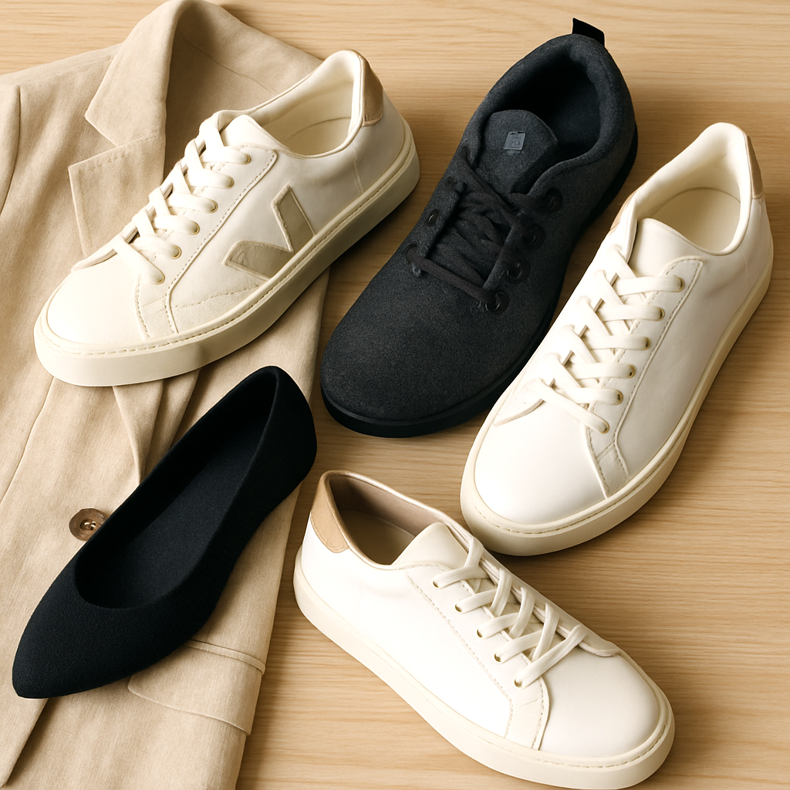
Sustainable Brands - who produces responsibly
Veja - French pioneer
Transparency as a business basis:
Veja's Approach:
• Fair Trade: Fair salaries for producers
• Organic Materials: Organic cotton from Brazil and Peru
• Wild Rubber: Directly from collectors from the Amazon
• Minimal marketing: Investments in the community instead of advertising
Allbirds - woolen innovations
Comfort meets sustainability:
Allbirds Innovations:
• Merino Wool: From ethical farms in New Zealand
• Tree Fiber: From eucalyptus
• Sugar cane soles: Sugar cane soles
• Carbon Neutral Shipping: Delivery without carbon trace
Rothy's - Circular Fashion
Shoes made of plastic bottles:
Rothy's Model:
• Recycled Plastic: 3 bottles = 1 pair of shoes
• Machine Washable: Easy to keep clean
• 3D Knitting: Zero Waste Production Process
• Take-Back Program: Recycling of old shoes
Koio - Luxury sustainability
Luxury can be responsible:
Koio Philosophy:
• Italian Craftsmanship: Traditional production techniques
• Premium Materials: High -quality, durable materials
• Minimal Waste: Production on request
• Repair Program: Repair services
Polish Sustainable brands
Local alternatives:
Polish Sustainable Brands:
• Nae Vegan Shoes: Portuguese brand available in Poland
• Local sessions: Custom Made, Repair Services
• Vintage Shops: Extending the life of shoes
• Eco Fashion Startups: New Sustainability brands
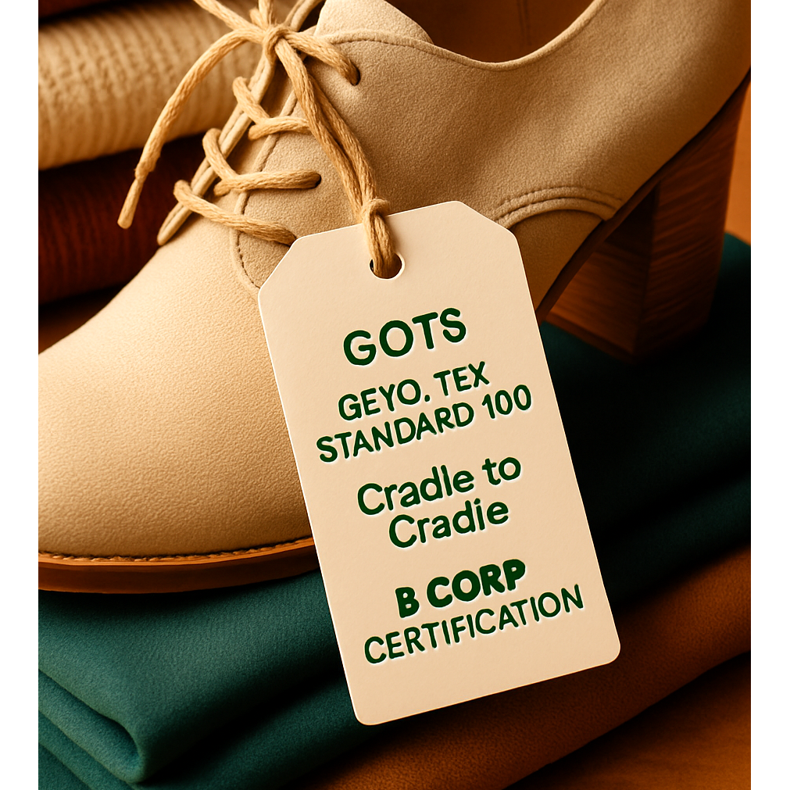
How to truly recognize sustainable shoes - a guide of a conscious consumer
Certifications and standards
How to truly recognize sustainable shoes:
Key certifications:
• Gots (Global Organic Textile Standard): Organic fibers
• OEKO-TEX STANDARD 100: Safe for health
• Cradle to Cradle: Circular Design Principles
• B Corp Certification: Social responsibility
Greenwashing Red Flags
Watch out for false Eco-Claims:
Warning SIGNS:
• Vague Terms like "eco-friendly" without details
• One Eco element with the rest of the conventional
• no transparent Supply Chain Information
• too low prices for sustainable production
Research Techniques
How to check the brands before buying:
Due Diligence Steps:
• Website Research: Search for detailed sustainability pages
• Third-Party Reviews: Independent Eco-Fashion Blogs
• Certification Verification: Check Certification Websites
• Social Media Transparency: Behind-the-scenes content
Price vs value assessment
Sustainable shoes often cost more:
Understanding Premium Pricing:
• Fair Wages: Ethical salaries of employees
• Quality Materials: More durable, more expensive raw materials
• Small Scale Production: No Economies of Scale
• R&D COSTS: Innovative Materials investments
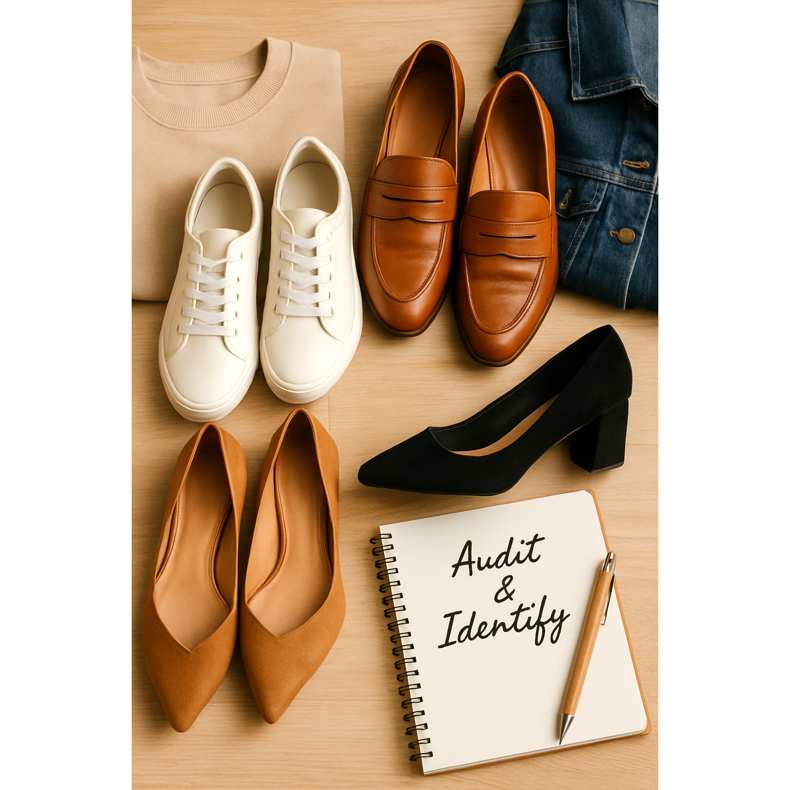
How to build a sustainable shoe wardrobe - a practical guide
Principle 1: Buy Less, Choose Well
Quality above quantity:
Mindful Purchasing:
• Cost per wear calculation: Divide the price by the expected number of wearing
• Versatility Assessment: Do the shoes fit up to 80% of the wardrobe?
• Seasonal Planning: Buy at the beginning of the season, not at the end
• Impulse control: 48-Hour Rules before buying
Principle 2: Extend Product Life
Maximize the life of the shoes:
Life Extension Strategies:
• Property Care: Regular cleaning and maintenance
• Rotation System: Do not wear the same shoes every day
• Professional Repirs: Shoemaker instead of throwing
• Weather Protection: Impregnates, protectors
Principle 3: Second-Hand First
Extend the lives of existing shoes:
Pre-no Options:
• Vintage Luxury: Designer Shoes at a good price
• Consignment Shops: Kupeded Second-Hand
• Online Platforms: Vinted, Vestiaire Collective
• Rental Services: For Special Occasion Shoes
Principle 4: End-of-Life Planning
Responsible to get rid of shoes:
Disposal Options:
• Donate: Charity Shops, Homeless Shelters
• Recycle: Brand Take-Back Programs
• Upcycle: DIY Projects, Planters
• Sell: Online marketplaces
Building sustainable shoe wardrobe
Practical action plan:
Step-By-Step Approach:
1. Audit Existing Collection: What do you already have?
2. Identify Gaps: What do you really need?
3. Set Annual Budget: Sustainable Shoes Cost More Upfront
4. Research Sustainable Brands: Find your preferred styles
5. Invest Gradually: Replace items as they wear out
6. Maintain Property: Extend Life Through Care